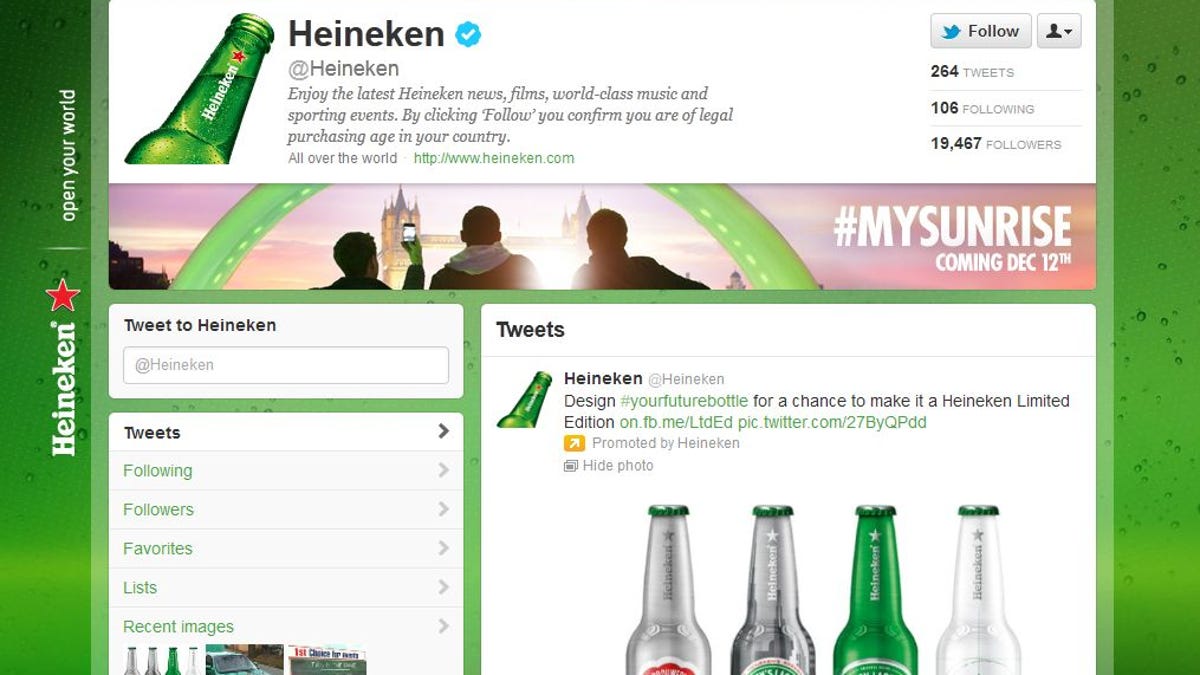Why Twitter is becoming more like Facebook
Inadvertently or not, Twitter's redesigners are following the advice of tech impresario Sean Parker--and taking a page from Facebook.

Twitter's redesign today has one major goal: To get the microblogging service out of Facebook's shadow.
And whether Twitter execs are aware of it or not, in so doing they're taking advice from Sean Parker--the founding president of Facebook, who might know a thing or two about social media.
I spoke to Parker about Twitter during a conference last month in Tucson, Arizona. Parker was late to join the Twitter bandwagon. He blasted out his first tweet--an apology to Facebook CEO Mark Zuckerberg--in early October. "Sorry Zuck, I had to do it eventually," he wrote.
Parker, being Parker, quickly amassed more than 100,000 followers, and today that number has climbed to almost 345,000.
Still, Parker told me he wasn't sold on Twitter. He wasn't convinced all those followers meant much, or that they were even human beings. Were his followers really paying attention to what he tweeted? How would they even see his stuff?
Parker's complaint is one I share and hear often: The river of tweets rushes by so quickly--especially if you're following several hundred people--that it's way too easy to miss the stuff you might care about most.
The way Parker saw it, Twitter had only one way to fix this looming problem with what the business types like to call reader "engagement."
"They need to become more like Facebook," he told me. And now that's exactly what Twitter is trying to do with its overhaul. It's wrapping its new look and feel around your "home" page--itself a Facebook-like development.
Twitter was never an intuitive service. It felt like something built by engineers, with a "bolted-together" feel that makes it way too difficult for many people to get started on their own. In fact, one of its most useful features--the hashtag, which lets people target their tweets to specific topics--was developed by users, not the company. (Still, the meaning of many hashtags--#NCT, anyone?--often remains obscure until you look them up.)
So today Twitter did something seemingly small but very smart. It's killing off the word "hashtag" and replacing it, high on the home page, with an English word: "Discover."
More importantly, Twitter is adding some intelligence to the "discover" feature that should help improve engagement. Click on discover, and Twitter promises to deliver a useful steam of customized information.
Photos, too, are key to the new redesign, and that's another area that Parker told me he thought Twitter needed to work on. A big part of Facebook's appeal--and something that keeps users coming back and sticking around--is that it's an easy place to share and store your photos.
Previously, photos were anything but easy to tweet, and when you managed it, they'd just turn up in tweets as abbreviated links to some photo-hosting service. Now photos appear neatly as part of a tweet. One click and they open up as part of the message. And it's all tied to your home page as a way to make it all easier to use and, more important, to up the odds you'll hang out a while.
Twitter is also rolling out its first branded pages, which--not to put too fine a point on it--look like a blatant borrowing from the Facebook playbook. (See above for one major example.)
Twitter, of course, isn't entirely a tool for geeks. Its role in the Arab Spring has been well documented, and it's delivering hundreds of billions of tweets every day. But it's also still searching for a meaningful business model to justify that $6 billion private market valuation. (It's raised $800 million to date).
Jack Dorsey, Twitter's executive chairman, spoke at the same conference where I met up with Parker. At his panel, he said Twitter's business model was based largely on "serendipity."
The new Twitter promotes "simplicity meets serendipity," which, at first glance, looks terrific from a user's perspective. The implied business message, however, is that it's dialing back on the serendipity part.

